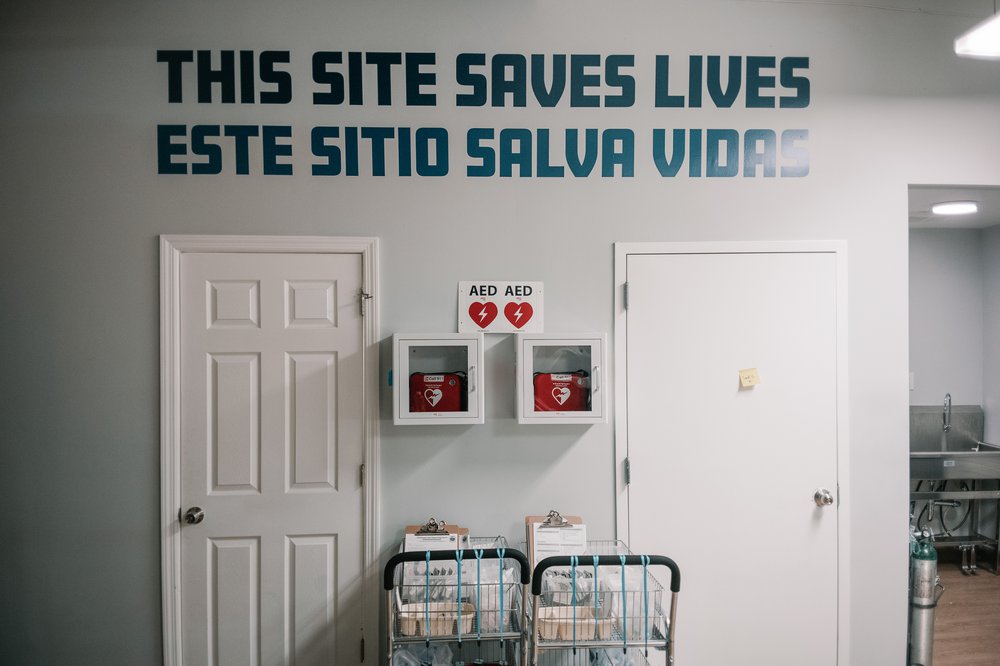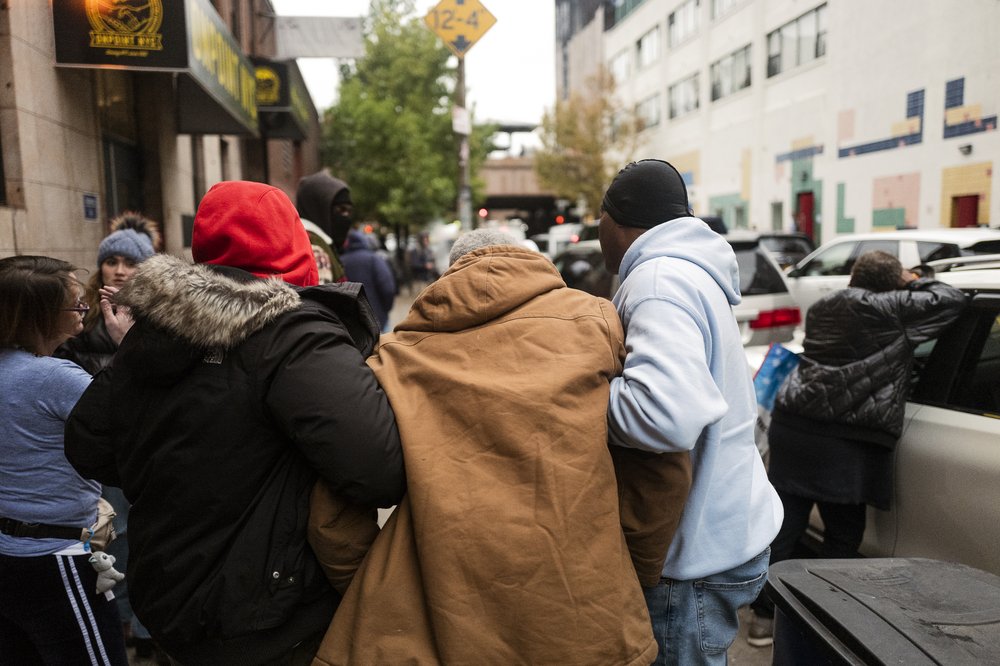Overdose prevention centers did not increase crime in NYC neighborhoods, study finds
Nov. 15, 2023, 6:31 a.m.
During the research period, the monthly average number of 911 calls for crime and other emergencies near the overdose prevention centers decreased 30%.

Despite anecdotal concerns reported by some neighbors, the areas surrounding New York City’s two overdose prevention centers in Upper Manhattan did not experience a disproportionate rise in crime after they opened in late 2021, according to a new study analyzing 911 calls, summonses and other city data.
The only upward trend involved a slight increase in the number of 311 calls about drug use in the areas immediately surrounding the overdose prevention centers, but the overall call volume remained very low, according to the study published on Monday in the Journal of the American Medical Association.
Overdose prevention centers, also known as safe injection sites, allow people to use illicit drugs like fentanyl under staff supervision. The nonprofit OnPoint NYC, which operates the city’s two existing centers in Harlem and Washington Heights, reports that its staff have intervened in more than 1,000 potentially fatal overdoses since opening in November 2021. The study is the first of its kind to examine the impact of the city’s overdose prevention centers on the neighborhoods where they operate, rather than just on the people using the facilities.
During the research period, the monthly average number of 911 calls for crime and other emergencies near the overdose prevention centers decreased 30%, while remaining mostly flat in comparison areas. Calls specifically for medical emergencies near the overdose prevention centers decreased by about 50% while declining only 8.6% in comparison locations.
Meanwhile, felonies increased by similar amounts near the overdose prevention centers (21%) and comparison sites (18%), which the study noted was consistent with a general rise in crime in the city during that time.
Concurrently, the study’s authors measured a significant drop in drug and weapons arrests near the sites in Harlem and Washington Heights, which they suggested could mean that police have eased up on enforcing some laws to avoid deterring people from using the facilities. After the overdose prevention centers opened, arrests for drug possession near the sites dropped about 83%, and arrests for weapons possession plunged about 70%, the study found.

The results come as Mayor Eric Adams seeks to expand overdose prevention centers to new neighborhoods, but the nonprofits trying to open these lifesaving facilities continue to face roadblocks — both in the form of local pushback and a lack of public funding.
Prior to the opening of the overdose prevention centers, each of the sites already operated as a syringe exchange that provided clean needles and other services to drug users. The study examined crime in the areas surrounding the centers before and after the overdose prevention centers opened — and compared that to the changes observed in the areas surrounding other syringe service programs in the five boroughs.
The study examined changes in the volume of 911 and 311 calls, arrests, summonses and crime reports generated by police and the public between January 2019 and December 2022.
“No one is going to say that things are great around these sites and nothing could be improved,” said study co-author Brandon del Pozo, who researches public health and is also a former NYPD officer. But, he added, “The marginal effect we found on crime and disorder is nil.”
But not everyone feels the findings match what’s happening on the ground. Xavier Santiago, chair of Community Board 11 in Harlem, said the study does not capture the whole picture and said many residents are still wary of the center in his neighborhood. He noted that some residents have lost faith in 311 and don’t bother calling. He added that some have a relationship with the local police precinct and make direct complaints instead.
“As a board, we have been vocalizing that people should trust the process [of calling 311], that it will get registered, because those data sets matter,” Santiago said.
Researchers at NYU Langone Health and Brown University are working on a longer-term study on the city’s overdose prevention centers. But many advocates are urging city and state officials to move quickly to expand the overdose prevention model, given the rapid rise in drug-related deaths in recent years.
State Attorney General Letitia James has reached settlements with drug manufacturers for more than $2.6 billion and that money is supposed to go toward addressing the state’s overdose crisis. However, none of it has gone toward overdose prevention centers so far. Gov. Kathy Hochul’s administration rejected a recommendation from the Opioid Settlement Fund Advisory Board last year recommending that funds go toward researching and expanding overdose prevention centers, noting that they are still federally illegal.
This year the advisory board renewed the recommendation. Hochul has yet to issue an official response but has signaled she will reject the proposal a second time.
How Citymeals on Wheels and other senior services are prepping for NYC's next disaster NYC schools are getting $282K grant to help stop kids from vaping